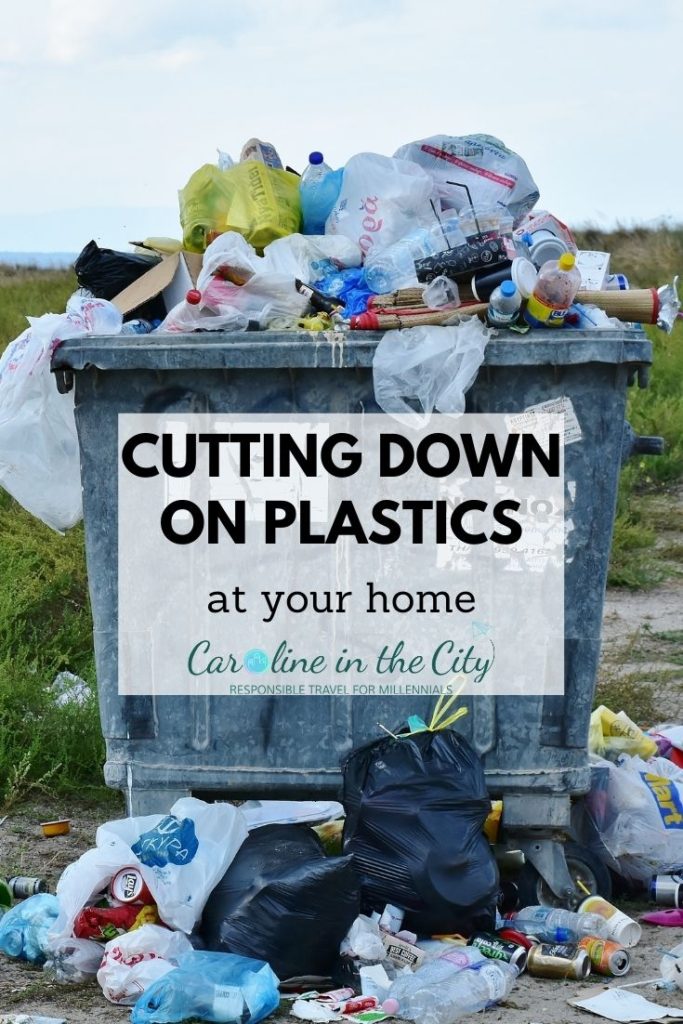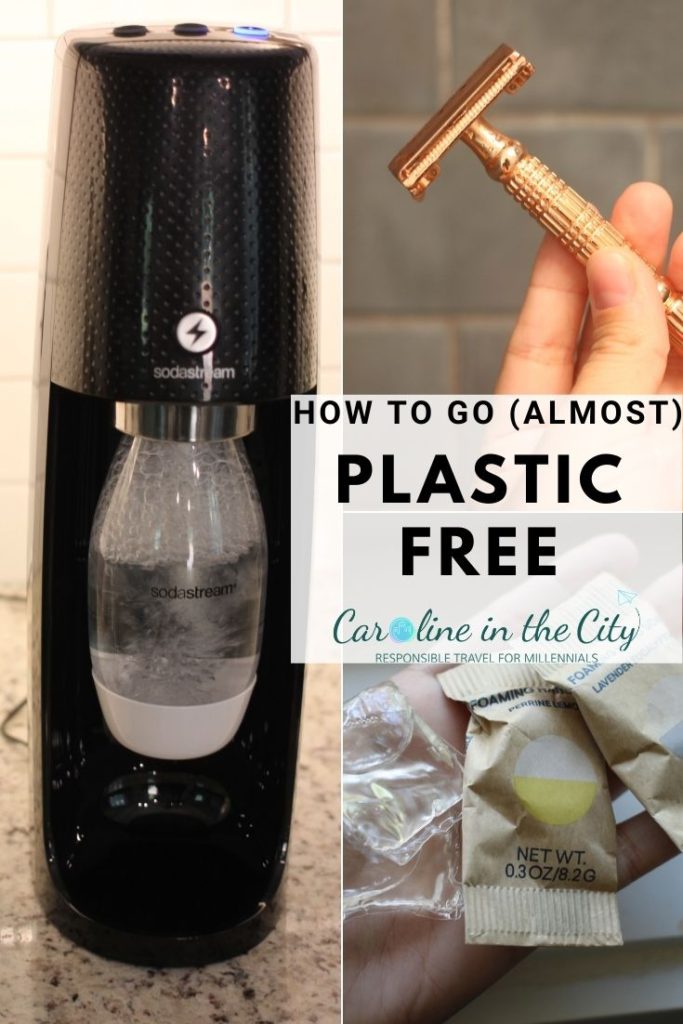With all that is going on in the world, it’s more important than ever to be mindful of how you use plastics and other packaging. Being stuck at home instead of traveling has given me time to consider the waste I produce and how to minimize it. I’ve talked about easy ways to help the environment before and many of the tips overlap.
This post contains affiliate links that can earn this website a small income. They will not cost you anything to use.
Coffee

I don’t know about you, but when I was regularly coworking, coffee was my main vice. But since I’ve been stuck at home, I have continued drinking it daily, just differently, giving up the plastic cups along the way.
For Christmas, I got the Nespresso Vertuo with the Aeroccino milk frother. I got it because Nespresso recycles their metal pods and composts the remaining coffee. And the milk frother is perfect for making fancy cafe-style drinks at home. Avoid Keurig at all costs!
If you want to avoid a machine altogether, there are small systems that save counter space without sacrificing flavor. Pour over systems typically use less water and paper or reusable filters. The French press and Moka also make great coffee.
In terms of cold brew, it’s one of the easiest things to make so skip the bottled versions at the grocery store. Make your own using a mason jar and cheesecloth or purchase the Blue Bottle system, which I use.
Groceries and Kitchen

I try to limit my plastic when I shop for groceries, but sometimes it’s unavoidable. I don’t live near a bulk food store like Whole Foods or Sprouts (although COVID makes this tough) but try to be mindful of what products I get and how much excess plastic and packaging there is.
For example, I buy oat milk containers that are recyclable and wine from boxes, which can be recycled entirely apart from the tap. I buy as much from farmer’s markets as I can, which allows the items to be fresh and local, not to mention nearly plastic-free. If you’re in a state that offers it, Loop allows you to exchange full for empty containers of food and home products.
I also bring my own bag from Baggu and recycle any plastic bags that I ended up with at the onsite recycling in front of the store. I bring reusable mesh bags for my produce.

When I can, I make products from scratch instead of buying them like bagels, sauces, and pasta. In the future, I hope to be able to swap out milk bottles or make my own nut milk. I also got a Sodastream for my birthday, which has cut down my La Croix purchases completely.
I don’t buy food storage anymore and instead, use what I already have. Mason jars can be used for just about everything. I also use Stasher silicone reusable zippered bags and Bee’s Wrap.
Laundry and Cleaning

Cleaning supplies can be very wasteful because of the large plastic containers they come in. I first purchased cleaning supplies from Blueland so that I could clean before we moved in. Their tablets are so easy to use that I ended up getting all three cleaning solutions and foam soap.
Both can be used in any spray or pump containers so no need to throw an old one away. Cleancult and Public Goods make refills for soap as well.
I recently started using Dropps, a company that produced the original detergent pods. This eliminates waste and they come in recyclable packaging. One container is good for over 60 washes! I also try using kitchen towels over paper towels and natural sponges.
Recycling and Composting

When I moved into my new house, I signed up for trash and recycling. I got a bigger bin for recycling than trash as it comes every other week instead of every week. What I’ve found is that I very rarely fill up the trash more than one bag, while the recycling bin is always full. The cost wasn’t much more than just for trash.
Even if you don’t want to pay for a recycling pickup service, there are drop off locations everywhere, including at public schools, county offices, and even at grocery stores. They usually take plastic, paper, and aluminum with a few taking glass.

Keep in mind that just because you recycle doesn’t mean it actually gets recycled. Other countries usually buy it from the US to recycle but there’s a massive backlog. Instead, do what you can to skip recyclables.
Instead, reuse where you can. As I said before, plastic containers from takeout and Mason jars can be used as food storage. I’ve also used tea tins and cans as planters.
Speaking of plants, don’t forget about composting. Food scraps like coffee grounds and eggshells can go into a tabletop composting bin, adding nutrients to your garden soil.
Shopping

One of my worst habits is ordering things from Amazon because it’s so easy (and yes, I am still an affiliate). But there’s almost unnecessary packaging that comes with it. The cardboard can be recycled but the bubble wrap can’t be. If it’s books you’re after, take advantage of your local library and Little Free Libraries rather than ordering new.
I’m also not buying much clothing at the moment because of the difficulty of trying them on, but I prefer to buy in person rather than to pay the cost of returning if it doesn’t fit. And when possible, I buy secondhand.
Toiletries

This year I finally made the switch to a safety razor, which requires very inexpensive blades rather than the $10 per container ones subject to the “pink tax.”
Recyclable toothbrushes, made out of bamboo, are more sustainable, along with solid toothpaste and shampoo. I’m a longtime advocate of the Diva Cup, a reusable menstrual cup with a very low risk of toxic shock syndrome. Eco toilet paper from companies like Plant Paper is also a must-have, sent in recyclable packaging.
Do you have any tips for eliminating unnecessary plastic?
Looking for more ways to go package and plastic-free (or almost free)? Check out Package Free Shop and Public Goods.
PIN IT


Leave a Reply